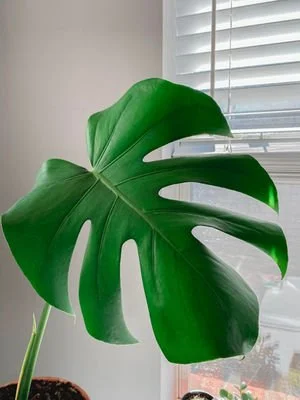How To Care For Monstera Deliciosa AKA Swiss Cheese Plant
Monstera deliciosa, otherwise known as the swiss cheese plant, has been topping the trending charts for a while now. You have probably seen its luscious leaves everywhere from t-shirts to logos, and everything in between. Monstera deliciosa is a force to be reckoned with.
If you haven't known by now, Monstera's are all the rave. I am completely obsessed with this plant and you should be too. This plant's wild appearance and seamless jungle vibe has brought it to the forefront of the plant community in recent years.
Monsteras offer a wild jungle feel while keeping care requirements fairly low. They will brighten up any corner of your home and that's a fact.
If you are looking for a lush and beginner-friendly plant, you need to add a Monstera to your wish list.
What Is Monstera Deliciosa?
Swiss cheese plant is an evergreen piphyte with aerial roots from the arum family Araceae. This plant is native to Mexico and Central America. In their natural habitat, you can see them dawned with giant and lush leaves climbing effortlessly up trees.
Monstera deliciosa has aerial roots which they use to anchor themselves to the bark of trees and take up water and necessary nutrients. This plant is a prolific grower and if given the right light will push out fenestrated leaves aka leaves with "holes".
A Beautiful Low-Maintenance Plant Baby
Monsteras are actually great beginner plants. As long as they are receiving enough light and water they will push out new growth like it's nothing. This plant is a FAST grower, which I personally love. It's also a great statement plant and will take over any corner of your home...if you let it. Just give it a climbing pole or trellis and you will be rewarded.
This plant is a great option for any plant parent and it fits almost everyone's aesthetic. 10/10 would recommend.
A Natural Climber
In their natural habitat, monsteras climb up trees attaching themselves to the bark with their aerial roots. So in an indoor setting, you want to try to replicate that as best as possible. To do so create a moss pole or buy a bamboo trellis to plant in the pot. Then train the plant to start climbing. I like to use string or garden twine to tie the aerial nodes to the pole or trellis. This allows the plant to gradually start attaching itself (like how it would do the bark of a tree). Start training your plant once it starts spilling out of the pot. You don't have to let it climb (It's your plant so do whatcha want to do), but it will be happier and push out bigger leaves if you give it the tools to climb.
Hot Tip: Monsteras will grow these long branch-looking roots called aerial roots that shoot out from the aerial nodes. These roots are used to stabilize them and to take up moisture from the air. Take these roots and put them back into the soil in your pot. If you have a lot, I've also seen people putting the roots in a vase of water. This will stabilize your plant while also giving it the feeling of being in its natural habitat.
Quick Care Tips
Light: Bright indirect light to Semi-shaded. No direct sunlight unless it's winter. If your plant is not getting enough light, the leaves will not develop their coveted "holes".
Temperature: Warm to normal room temperature.
Watering: Water regularly, but allow the top 2-3 inches of soil to dry out between waterings. If the air is dry try using a humidifier or mist the leaves!
Fertilizer: Give standard liquid fertilizer every two weeks to actively growing plants.
Special Notes: Dust your leaves to keep them clean. Train aerial roots to climb with a moss pole or trellis. Put aerial roots in the soil or in a vase of water to stabilize the plant.
All in all, Monsteras deliciosas are amazing. They bring me a lot of joy and I'm sure they will bring you some too.
Happy planting!
Savannah



